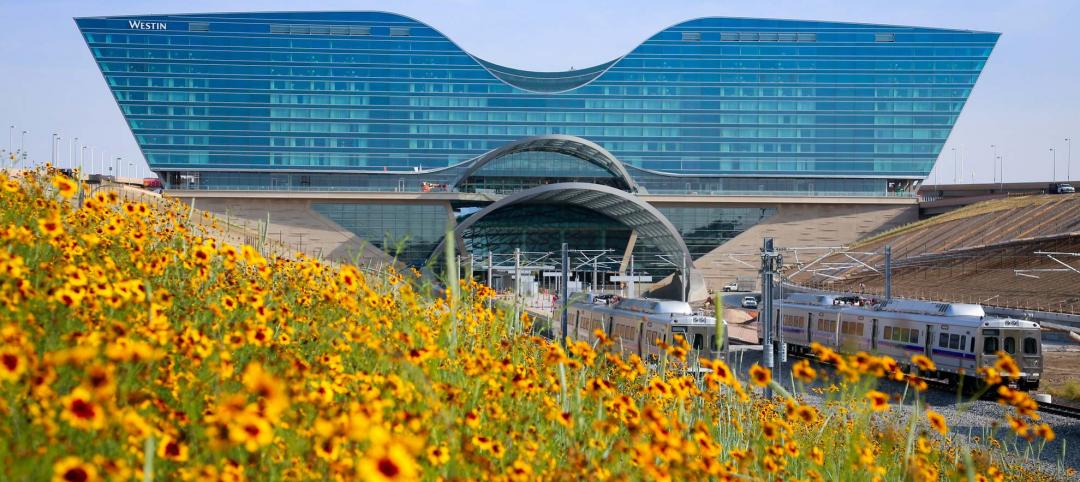Alan Greenberger, FAIA, former Philadelphia Deputy Mayor and Chairman of the City Planning Commission, has been selected to receive the 2017 Thomas Jefferson Award. The Thomas Jefferson Award recognizes excellence in architectural advocacy and achievement. Greenberger will be honored at the AIA Conference on Architecture 2017 in Orlando.
Lured from his role as a principal at Philadelphia’s MGA Partners by former Philadelphia Mayor Michael Nutter, Greenberger quickly assumed a dual role as deputy mayor and chairman of the City Planning Commission. Responsible for the Department of Commerce as well as oversight of planning and 10 additional agencies, Greenberger spearheaded an audacious initiative to rewrite the city’s antiquated and convoluted zoning code and create Philadelphia2035, a comprehensive plan for the city’s renaissance. During his tenure, he also completed and approved plans for all 37 miles of the city’s waterfront and led Philadelphia to its greatest redevelopment and population influx since the mid-20th century.
When the Nutter administration reached its two-term limit, Greenberger left full-time public office. He now shares his knowledge and wealth of experience with the next generation of design professionals as the Distinguished Teaching Professor and Lind Fellow in the Department of Architecture and Interiors at Drexel University. Later this year, he will assume the role of department head. Greenberger remains active with the city he helped become a UNESCO World Heritage site in 2015, serving as chairman of the Philadelphia Art Commission. An independent body, it is tasked with design oversight of all public facilities, signage, and artwork.
Related Stories
Architects | Mar 11, 2016
Architecture for Humanity rebrands itself as Open Architecture Collaborative
With a new name, logo, and mission, the Open Architecture Collaborative is seeking a fresh start.
Architects | Mar 11, 2016
AIA survey finds many women and minority architects still feeling underrepresented and unfulfilled
Dissatisfaction with “work-life balance” and compensation are cited as reasons why companies’ diversity strategies may be faltering.
University Buildings | Mar 11, 2016
How architects can help community colleges promote community on campus
Even in the face of funding challenges and historic precedent, there are emerging examples of how partnership between two-year academic institutions and designers can further elevate community on campus. CannonDesign's Carisima Koenig has a few key examples.
Architects | Mar 10, 2016
Value engineering: How to manage the process and limit the risk of VE
AEC consultant Steve Whitehorn shares several ways in which architects can be more effective managers of value-engineered change.
Architects | Mar 9, 2016
Two Houston firms merge to form Method Architecture
In mid-2016, Architects-Plus and Three Square Design Group will join to make a studio that will design industrial centers, corporate interiors, breweries, and more.
Hotel Facilities | Mar 7, 2016
Exclusive villas and spa in China will be built at the center of a lake
The only connection between the complex and the mainland will be a narrow pedestrian bridge.
Office Buildings | Mar 2, 2016
HDR redesigns Twin Cities' studio to have coffee shop vibe
With open spaces, huddle rooms, and a design lab, the firm's new digs are drastically different than the old studio, which felt like working in a law office. Design Principal Mike Rodriguez highlights HDR's renovation plan.
Architects | Feb 25, 2016
12 architects selected for 2016 AIA Young Architects Award
Winners include Amy Kalar and Karen Lu, both with HGA, BNIM's Carey Nagle, and MSR Design's Bob Ganser.
Architects | Feb 24, 2016
Is the booming freelance economy a threat to AEC firms?
By shifting the work (and revenue) to freelancers, “platform capitalism” startups have taken considerable market share from traditional businesses.
Industry Research | Feb 22, 2016
8 of the most interesting trends from Gensler’s Design Forecast 2016
Technology is running wild in Gensler’s 2016 forecast, as things like virtual reality, "smart" buildings and products, and fully connected online and offline worlds are making their presence felt throughout many of the future's top trends.

















